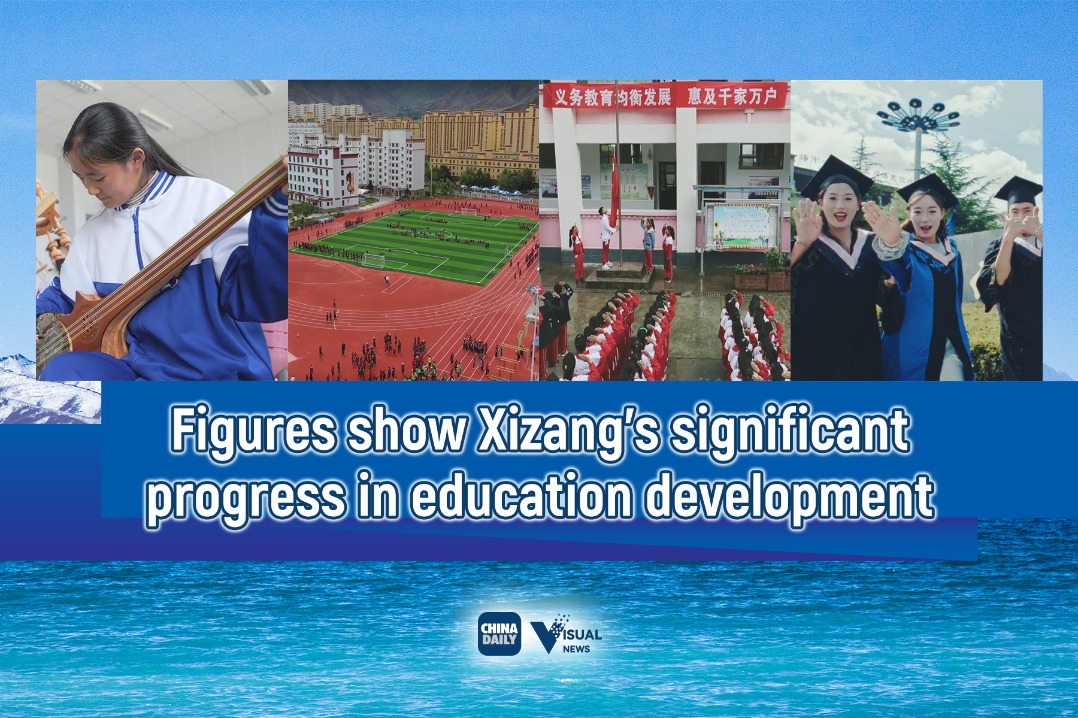Shenzhen advances as demonstration city


Shenzhen in Guangdong province has taken great strides and instituted a number of novel measures since the guideline to turn the city into a demonstration area for socialism with Chinese characteristics was issued three years ago.
Premier Li Keqiang recognized that the city has developed into an international metropolis during an inspection tour on Tuesday and Wednesday.
He pointed out that Shenzhen and Guangdong should continue to lead the country in reform and opening-up, and play a major role in economic growth.
During the trip, Li visited Yantian Port, a major foreign trade port in Shenzhen, China's electric vehicle manufacturer BYD, and an innovation park.
In order to raise the bar on reform and opening-up, the Communist Party of China Central Committee and the State Council released a guideline on Aug 18, 2019 in support of Shenzhen becoming a pilot demonstration area for socialism with Chinese characteristics.
It set the aim of making Shenzhen a top-tier world city in terms of economic strength and development by 2025, with intensive investment in research and development and world-class industrial innovation.
Among 56 major tasks laid out in the guideline, 14 have been accomplished and significant progress has been made on the remaining 42, according to the city government.
For instance, the guideline proposed to pilot trials of cutting-edge medical technologies from across the world. In response, the Hong Kong and Macao Medicine and Equipment Connect policy was piloted in the city in 2020, to allow designated mainland hospitals to use Hong Kong-approved drugs and medical devices without prior certification from the National Medical Products Administration.
The guidelines also encouraged improving bankruptcy mechanisms, and China's first regulation on individual bankruptcy took effect on March 1, 2021, in Shenzhen.
Official statistics show that Shenzhen's gross domestic product exceeded 3 trillion yuan ($441.6 billion) last year and it had an average annual growth rate of 5.5 percent over the last three years.
Known for scientific and technological innovation, Shenzhen has been increasing investment in research and development. Last year, R&D investment accounted for 5.46 percent of the city's GDP, among the top in China.
"Breaking through the 3-trillion mark means that Shenzhen's economic output has jumped to a new level, especially last year, when the economic environment was problematic. These achievements have not been easily won," said Wang Yunxing, executive director of the public economy department at the China Development Institute.
In the last three years, Shenzhen has also speeded up institutional innovation, with 29 new regulations and 25 revised, including ones regarding individual bankruptcy and data management as well as a punitive compensation system for infringement of intellectual property.
The guideline supports the city in implementing more novel, pilot projects, and its successful experience has in return expedited the stable development of new measures nationwide.
Taking the digital yuan as an example, Shenzhen carried out a trial program in 2020 that involved tens of thousands of customers, the first application of digital yuan in an open environment. Following in the city's footsteps, dozens of other cities have run their own digital yuan tests.
On the one hand, this is all in line with the guideline, and helps build a better currency environment for forging a demonstration area for socialism with Chinese characteristics, and on the other, it has accumulated experience for national use, said Dong Ximiao, chief researcher at Merchants Union Consumer Finance Co.
The guideline also proposed that Shenzhen should take the lead in shaping people's livelihoods development and last year, the city's per capita disposable income exceeded 70,000 yuan, undergoing average annual growth of 6.9 percent over the last three years.
Between 2019 and 2021, it increased elementary education to admit an additional 304,000 students, and created 16,000 new hospital beds.
- Parade brings service members' dreams alive
- China activates Ningxia-Hunan power line
- Autonomous taxis drive Hainan's smart tourism
- Shenyang exhibit showcases historical justice
- Program aims to popularize awareness of disability prevention countrywide
- Death toll rises to 5 amid heavy rains in Inner Mongolia's Ordos





































